
World War II or the Second World War, often abbreviated as WWII or WW2, was a world war that lasted from 1939 to 1945. It involved the vast majority of the world's countries—including all of the great powers—forming two opposing military alliances: the Allies and the Axis powers. World War II was a total war that directly involved more than 100 million personnel from more than 30 countries.

The Russo-Japanese War was fought between the Empire of Japan and the Russian Empire during 1904 and 1905 over rival imperial ambitions in Manchuria and the Korean Empire. The major theatres of military operations were located in Liaodong Peninsula and Mukden in Southern Manchuria, and the Yellow Sea and the Sea of Japan. Russia sought a warm-water port on the Pacific Ocean both for its navy and for maritime trade. Vladivostok remained ice-free and operational only during the summer; Port Arthur, a naval base in Liaodong Province leased to Russia by the Qing dynasty of China from 1897, was operational year round. Russia had pursued an expansionist policy east of the Urals, in Siberia and the Far East, since the reign of Ivan the Terrible in the 16th century. Since the end of the First Sino-Japanese War in 1895, Japan had feared Russian encroachment would interfere with its plans to establish a sphere of influence in Korea and Manchuria.
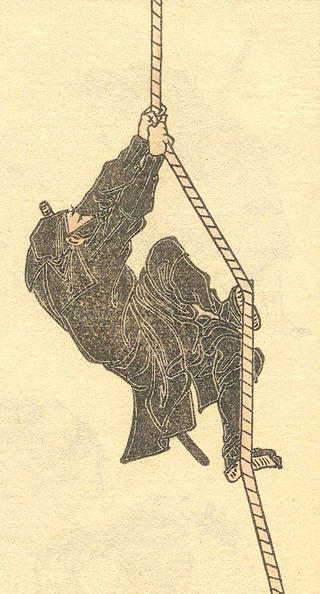
A ninja or shinobi was a covert agent or mercenary in feudal Japan. The functions of a ninja included reconnaissance, espionage, infiltration, deception, ambush, bodyguarding and their fighting skills in martial arts, including ninjutsu. Their covert methods of waging irregular warfare were deemed dishonorable and beneath the honor of the samurai. Though shinobi proper, as specially trained spies and mercenaries, appeared in the 15th century during the Sengoku period, antecedents may have existed as early as the 12th century.
Creative Commons (CC) is an American non-profit organization and international network devoted to educational access and expanding the range of creative works available for others to build upon legally and to share. The organization has released several copyright licenses, known as Creative Commons licenses, free of charge to the public. These licenses allow authors of creative works to communicate which rights they reserve and which rights they waive for the benefit of recipients or other creators. An easy-to-understand one-page explanation of rights, with associated visual symbols, explains the specifics of each Creative Commons license. Content owners still maintain their copyright, but Creative Commons licenses give standard releases that replace the individual negotiations for specific rights between copyright owner (licensor) and licensee, that are necessary under an "all rights reserved" copyright management.
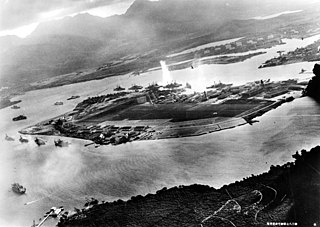
The attack on Pearl Harbor was a surprise military strike by the Imperial Japanese Navy Air Service upon the United States against the naval base at Pearl Harbor in Honolulu, Territory of Hawaii, just before 8:00 a.m. on Sunday, December 7, 1941. The United States was a neutral country at the time; the attack led to its formal entry into World War II the next day. The Japanese military leadership referred to the attack as the Hawaii Operation and Operation AI, and as Operation Z during its planning.

The Battle of the Coral Sea, from 4 to 8 May 1942, was a major naval battle between the Imperial Japanese Navy (IJN) and naval and air forces of the United States and Australia. Taking place in the Pacific Theatre of World War II, the battle is historically significant as the first action in which the opposing fleets neither sighted nor fired upon one another, attacking over the horizon with aircraft carriers instead.
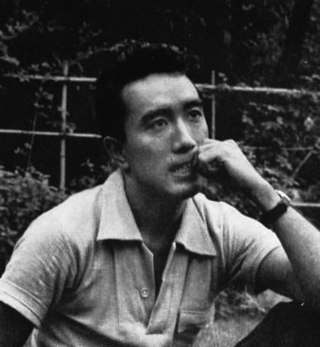
Yukio Mishima, born Kimitake Hiraoka, was a Japanese author, poet, playwright, actor, model, Shintoist, nationalist, and founder of the Tatenokai, an unarmed civilian militia. Mishima is considered one of the most important Japanese authors of the 20th century. He was considered for the Nobel Prize in Literature in 1968, but the award went to his countryman and benefactor Yasunari Kawabata. His works include the novels Confessions of a Mask and The Temple of the Golden Pavilion, and the autobiographical essay Sun and Steel. Mishima's work is characterized by "its luxurious vocabulary and decadent metaphors, its fusion of traditional Japanese and modern Western literary styles, and its obsessive assertions of the unity of beauty, eroticism and death", according to author Andrew Rankin.

Hikaru no Go is a Japanese manga series based on the board game Go, written by Yumi Hotta and illustrated by Takeshi Obata. The production of the series' Go games was supervised by Go professional Yukari Umezawa. It was serialized in Shueisha's Weekly Shōnen Jump from 1999 to 2003, with its chapters collected into 23 tankōbon volumes. The story follows Hikaru, who discovers a Go board in his grandfather's attic one day. The object turns out to be haunted by a ghost named Sai, the emperor's former Go teacher in the Heian era. Sai finds himself trapped in Hikaru's mind and gradually gives him a taste for Go.
The IFAF World Championship of American Football is an international gridiron competition held every four years and contested by teams representing member nations. The competition is run by the International Federation of American Football (IFAF), the international governing body for the sport. Seventy-one nations have a national American football team. The most recent tournament, in 2015, featured seven teams.
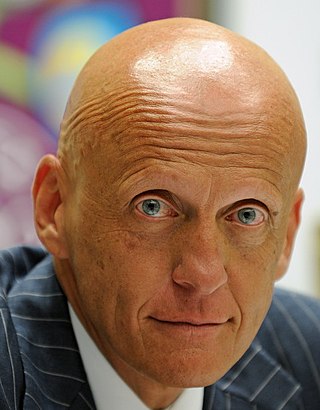
Pierluigi Collina is an Italian former football referee. He was named FIFA's "Best Referee of the Year" six consecutive times and is widely considered to be the best football referee of all time and widely considered as "Godfather of all referees".

Hajime no Ippo is a Japanese boxing-themed manga series written and illustrated by George Morikawa. It has been serialized by Kodansha in the shōnen manga magazine Weekly Shōnen Magazine since October 1989 and collected into 135 tankōbon volumes as of July 2022. It follows the story of high school student Makunouchi Ippo, as he begins his career in boxing and over time obtains many titles and defeats various opponents.

The 2003 FIA Formula One World Championship was the 57th season of FIA Formula One motor racing. It began on 9 March 2003 and ended on 12 October after sixteen races. World Championship titles were awarded for both drivers and constructors with Michael Schumacher winning the former and Ferrari awarded the latter.

Yutaka Akita is a former Japanese football player and manager. He played for Japan national team He is the current chairman of Iwate Grulla Morioka.

Shigeru Mizuki was a Japanese manga artist and historian, best known for his manga series GeGeGe no Kitarō. Born in a hospital in Osaka and raised in the city of Sakaiminato, Tottori, he later moved to Chōfu, Tokyo where he remained until his death. His pen-name, Mizuki, comes from the time when he managed an inn called 'Mizuki Manor' while he drew pictures for kamishibai. A specialist in stories of Yōkai, he is considered a master of the genre. Mizuki was also a noted historian, publishing works relating to world history, Japanese history, and his own World War II experience.

The Honda CN250 is a scooter introduced by Honda to the United States market in 1986. It was marketed in the US as the Helix and in other parts of the world as the Fusion or Spazio.
Toshihiro Hattori is a Japanese former professional footballer who played as a midfielder or defender. He played for the Japan national team. he the current manager J3 League club of Fukushima United.
Ryuzo Morioka is a Japanese former professional footballer who played as a defender. He played for Japan national team.
Tatsuhiko Kubo is a former Japanese football player. He played for Japan national team.
Rapes during the occupation of Japan were war rapes or rapes committed under the Allied military occupation of Japan. Allied troops committed a number of rapes during the Battle of Okinawa during the last months of the Pacific War and the subsequent occupation of Japan. The Allies occupied Japan until 1952 following the end of World War II and Okinawa Prefecture remained under US governance for two decades after. Estimates of the incidence of sexual violence by Allied occupation personnel differ considerably.
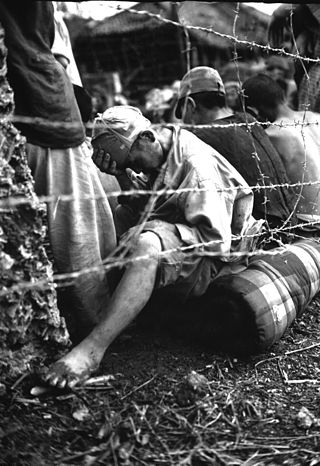
It has been estimated that prior to the end of the Pacific War in August 1945, 10 million members of the Imperial Japanese military were captured alive or surrendered to Western Allied forces. Also, Soviet troops seized and imprisoned more than half a million Japanese troops and civilians in China and other places. The number of Japanese soldiers, sailors, marines, and airmen who surrendered was limited by the Japanese military indoctrinating its personnel to fight to the death, Allied combat personnel often being unwilling to take prisoners, and many Japanese soldiers believing that those who surrendered would be killed by their captors.














